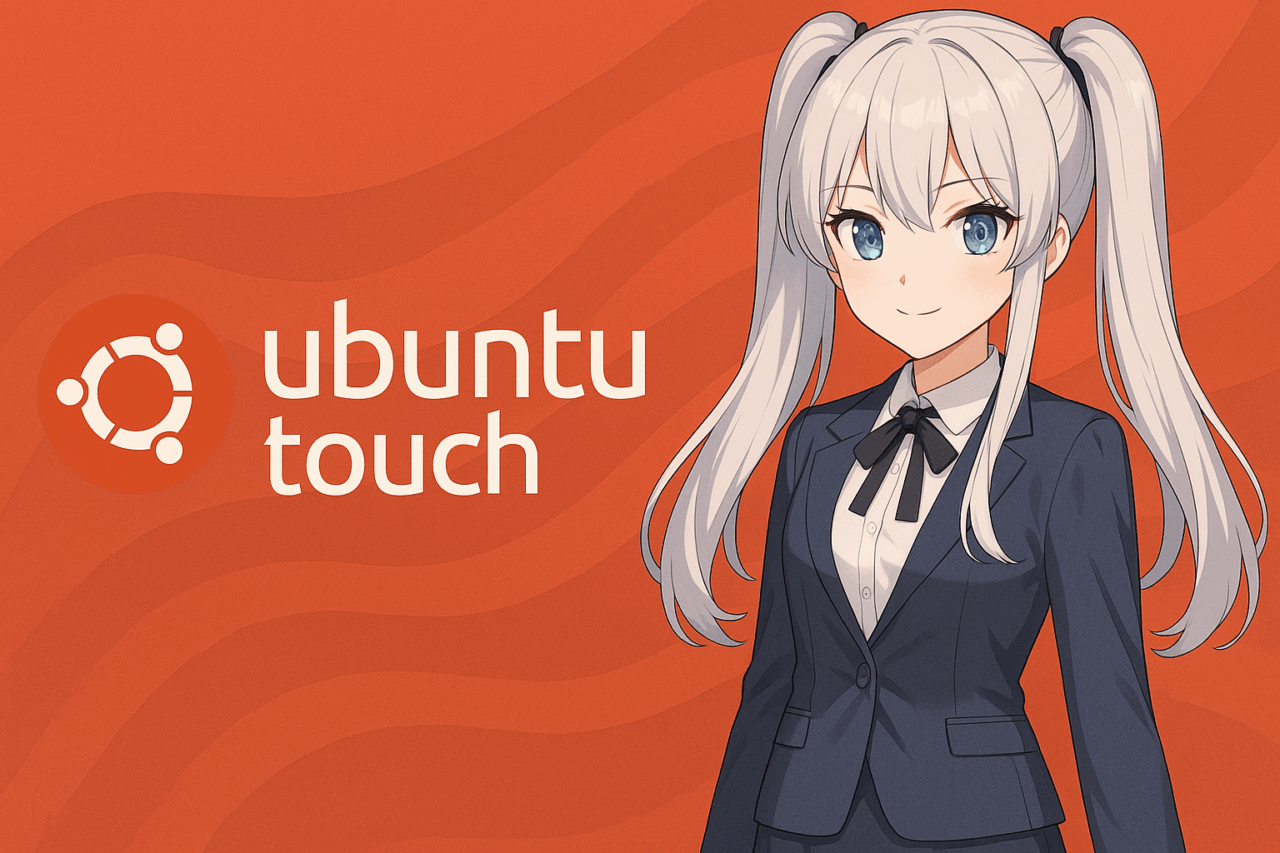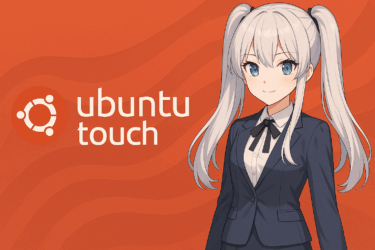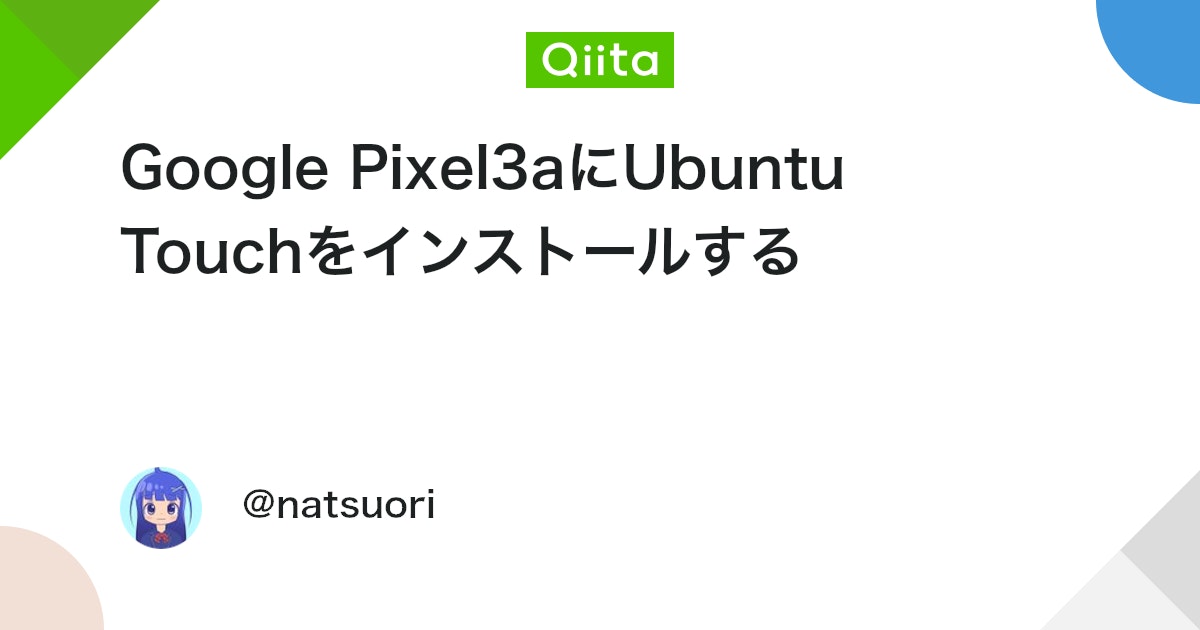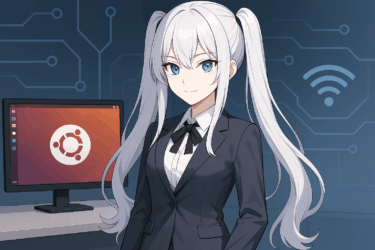- 1 1. What is Ubuntu Touch? A Free Smartphone OS Alternative to Android
- 2 2. Ubuntu Touch Overview and Development Background
- 3 3. Features and Benefits of Ubuntu Touch
- 4 4. Differences Between Ubuntu Touch and Android/iOS
- 5 5. Compatible Devices and How to Choose
- 6 6. How to Install Ubuntu Touch
- 7 7. Setting Up the Japanese Environment
- 8 8. Actual Usage Experience and Limitations
- 9 9. The Future of Ubuntu Touch and the Community
- 10 10. Who is Ubuntu Touch Suitable For?
- 11 11. Frequently Asked Questions (FAQ)
- 11.1 Q1. Is Ubuntu Touch free to use?
- 11.2 Q2. Can I install it on any smartphone?
- 11.3 Q3. Does it support Japanese input and display?
- 11.4 Q4. Can I use Android apps like LINE or YouTube?
- 11.5 Q5. Can I use calls, SMS, and mobile data communication with Ubuntu Touch?
- 11.6 Q6. Where can I get apps for Ubuntu Touch?
- 11.7 Q7. What is an OTA update? Are updates automatic?
- 11.8 Q8. Can I revert Ubuntu Touch? Can I go back to the original Android?
- 11.9 Q9. Is it secure?
- 11.10 Q10. What should I do to try Ubuntu Touch?
- 12 12. Summary and Call to Action
- 13 Reference Links
1. What is Ubuntu Touch? A Free Smartphone OS Alternative to Android
There is a “De-Googling” Option for Smartphones Too
When it comes to smartphones, the reality is that most users are using either Android or iOS. However, in recent years, there has been an increase in users seeking “privacy protection” and a “lifestyle not dependent on Google services.” Gaining attention in response to this demand is Ubuntu Touch, an open-source mobile OS.
Ubuntu Touch is a smartphone OS developed based on Ubuntu, one of the Linux distributions, and is evaluated as a “free alternative” to Android.
What is Ubuntu Touch? Its Origins
Ubuntu Touch was originally developed as part of Canonical’s vision to achieve “smartphone and PC convergence.” It was announced in 2013 as an independent operating system that runs on smartphones, based on the technology of the PC OS Ubuntu. However, development was temporarily halted in 2017. After that, a community group called UBports took over the project, and active development continues to this day.
Thus, a major characteristic of Ubuntu Touch is that it is nurtured not by a company, but by a global community of volunteers, making it one of the projects that embodies the open-source spirit.
Why Ubuntu Touch Now?
Entering the 2020s, concerns about personal information protection and digital surveillance have rapidly increased. Android devices require a Google account, and many apps are designed to record and collect Browse and search history. On the other hand, Ubuntu Touch is designed to be independent of services from major companies like Google and Apple, with user operations and data kept entirely on the device.
Furthermore, unlike centralized app distribution systems like Google Play and the App Store, Ubuntu Touch manages apps through an independent app distribution platform called OpenStore. This allows for the free development and use of software without worrying about censorship or regulations.
Prerequisite Knowledge for Adoption
Compared to typical smartphone OSes, Ubuntu Touch has aspects that are not yet at a level where “anyone can use it immediately.” Since compatible devices are limited and some functions (especially calls and SMS with Japanese carriers) have restrictions, a certain level of technical literacy is required for adoption.
However, it offers freedom and transparency that more than compensate for these aspects, making it a very attractive option for developers, security-conscious users, and those pursuing a free digital life.
2. Ubuntu Touch Overview and Development Background
From Canonical to UBports: The Project’s Journey
Ubuntu Touch was originally started by Canonical Ltd., the developer of the Linux distribution “Ubuntu.” In 2013, they also announced the “Ubuntu Edge” project, which aimed for smartphone and desktop convergence, generating significant buzz. However, funding proved difficult, and it did not achieve commercial success, leading Canonical to withdraw from Ubuntu Touch development in 2017.
Subsequently, the UBports (pronounced “you-bee-ports”) community, primarily composed of volunteers, stepped up to keep the project alive. They took over the source code and have been working on the development and maintenance of Ubuntu Touch, as well as implementing new features. Today, the UBports Foundation serves as the official parent organization, providing regular updates and expanding device compatibility.
UBports Development Structure and Community
UBports is not a corporate entity, but an open community with participating developers and users from around the world. Anyone can participate in development, and it features a highly transparent and participatory operational structure, including source code publication on GitHub, regular developer meetings, and support activities on Telegram and forums.
Furthermore, OTA (Over-The-Air) updates are provided regularly, and progress continues on security patches, feature improvements, and support for new devices. The fact that it is developed as an OS purely to “protect user freedom and privacy” without pursuing commercial profit is why it garners significant support.
What is the Strength of Being Ubuntu-Based?
Ubuntu Touch is built on Ubuntu 20.04 LTS (Long Term Support). This ensures the overall stability of the OS and provides long-term security patches and kernel updates.
Building on Ubuntu’s Long Term Support (LTS) version provides high stability and update longevity, offering the advantage of being able to use it with peace of mind for a longer period compared to other OSes.
Why Ubuntu Touch is Still Demanded Today
With Android and iOS dominating the market, Ubuntu Touch might seem like a “niche” presence. However, the reason the project continues is clear: there is a certain number of users who genuinely desire privacy and control.
For users who feel uneasy about features restricted by corporate interests or personal data collected without their knowledge, Ubuntu Touch is one of the few options that provides a smartphone environment they can fully manage themselves.
3. Features and Benefits of Ubuntu Touch
A Fully Open Source Smartphone OS that Protects Privacy
The biggest feature of Ubuntu Touch is that it is designed with user privacy as the top priority. Unlike smartphones from Google and Apple, Ubuntu Touch explicitly states that it does not collect user activity logs or personal data. A Google account is not required from the initial setup, and there is no automatic cloud synchronization or ad tracking.
As an entity that challenges the digital surveillance society, Ubuntu Touch is gaining attention as an option to “take back control of your smartphone.”
Intuitive and Beautiful User Interface “Lomiri”
Ubuntu Touch adopts a unique user interface called “Lomiri (formerly Unity8).” It is designed to be responsive, suitable for both smartphones and PCs, and features a light and fluid UI centered around gesture operations.
- App switching by swiping from the screen edge
- Simple multitasking operations
- Layout configuration similar to a desktop
These provide a new operating experience different from Android or iOS, allowing users to handle their smartphones very efficiently once they get used to it.
Independent App Store “OpenStore”
Ubuntu Touch does not have a centralized app store like Google Play, but a community-driven “OpenStore.” Many simple apps without ads or trackers are published here, and anyone can freely develop and submit apps.
Furthermore, while not yet compatible with package formats like Snap or Flatpak, apps are deployed using a unique .click format, and a sandbox environment is set up for each app, making it highly secure.
Can Also Use Android Apps with Waydroid
Ubuntu Touch allows you to run Android apps by utilizing Waydroid (formerly Anbox). Waydroid builds an Android virtual environment on Ubuntu Touch, and some apps like LINE and YouTube have been confirmed to work.
Of course, complete compatibility is not guaranteed, but it can be a powerful alternative for users who “want to use a minimal set of Android apps.”
High Stability Based on Ubuntu LTS
Ubuntu Touch is built on Ubuntu 20.04 LTS (Long Term Support). This ensures the overall stability of the OS and provides long-term security patches and kernel updates.
Being based on LTS makes it suitable for reliable long-term operation, serving as a factor that increases confidence in the OS for server use or business devices.
4. Differences Between Ubuntu Touch and Android/iOS
Fundamentally Different Software Philosophies
The difference between Android/iOS and Ubuntu Touch is not merely in operation methods or UI. The biggest difference lies in their “philosophy” or “principles” regarding software.
Android and iOS are provided by giant IT companies, Google and Apple respectively, and users are generally integrated into their ecosystems. App distribution, OS updates, backup functions, ad display, and how collected data is handled—everything is under the control of these companies.
On the other hand, Ubuntu Touch aims to provide users with the maximum freedom and transparency based on the principles of open source. It is operated by UBports, a non-profit community, and the source code is viewable and modifiable by anyone. The direction of development is often decided with user participation, and operations are conducted with user choice as the top priority, not corporate profit.
Differences in App Distribution and Freedom
On Android, apps are obtained through the official market, Google Play, and on iOS, through the App Store. While these markets are excellent in terms of safety, they also have the aspect of requiring compliance with corporate review and censorship, which restricts freedom.
Ubuntu Touch has an independent app store called OpenStore, where anyone can freely publish apps. There are hardly any apps with embedded ads or trackers, and many apps reflect the individuality and principles of the developers. The ease with which you can install apps on the device yourself (so-called sideloading) if necessary also speaks to the high degree of freedom.
System Updates and Owner’s Control Scope
With many iOS and Android devices, there is the problem that the availability of OS updates depends on the manufacturer. For example, in many cases, devices released several years ago no longer receive even security updates.
With Ubuntu Touch, on compatible devices, users can apply updates at their own discretion, allowing them to freely incorporate the latest features and security patches. Updates are provided through OTA updates from UBports, so there is no worry of support being discontinued due to commercial reasons.
Furthermore, system-level customization, such as unlocking the bootloader and replacing the kernel, is also permitted, creating a highly flexible environment for users with technical knowledge.
Different Approaches to Data and Privacy
On Android and iOS, behind convenient features like cloud synchronization and voice assistants, there is the collection of vast amounts of personal information. This reliance on Google and Apple for data accumulation can be said to sacrifice privacy for the sake of convenience.
Ubuntu Touch has the opposite philosophy in this regard. Data is fundamentally stored locally, and external communication is minimized. Account creation is not required during initial setup, and there is no built-in cloud sync feature. For those who want to completely manage their information themselves, there is no other OS more suitable.
5. Compatible Devices and How to Choose
Note that it Cannot Be Used on All Smartphones
Ubuntu Touch is not an OS that can be easily installed on all smartphones like Android or iOS. To install Ubuntu Touch, you need to choose a compatible device (supported device).
This is because Ubuntu Touch is uniquely optimized for hardware and individually sets up drivers and configurations for each device. Compatibility is constantly being updated, so it is important to check the latest list of compatible devices on the UBports official website before installation.
Officially Supported Devices: Choose These for Stability
UBports publishes a list of “Officially Supported Devices” where basic functions (calls, SMS, Wi-Fi, camera, etc.) have been verified to work stably. As of 2024, representative devices include:
- Google Pixel 3a
High stability and camera performance. A popular porting target. - Volla Phone / Volla Phone X
Ubuntu Touch pre-installed models are available, recommended for beginners. - Fairphone 4
An environmentally conscious smartphone. Modular design for easy repair and replacement. - PinePhone
An experimental smartphone designed for Linux. For technical users.
These devices are eligible for OTA updates and are suitable for long-term use.
Community Supported Devices: More Flexibility, But Requires Caution
On the other hand, there are many devices listed as “ported” or “under testing.” Ubuntu Touch runs on these devices due to porting efforts by volunteers outside of UBports, but some functions may be limited, or stability issues may exist.
For example, there may be limitations such as “camera works but video recording is not possible” or “mobile data is fine but VoLTE is not supported.” Therefore, careful judgment is required if you plan to use it for daily purposes.
Recommended Models for Easy Installation: Volla Phone and Pixel 3a
For those trying Ubuntu Touch for the first time, the Volla Phone and Pixel 3a are recommended.
- The Volla Phone is sold with a version officially pre-installed with Ubuntu Touch, making it a great choice because it can be used immediately without configuration.
- The Pixel 3a is a Google-made device with rich driver and support information, and it is one of the devices specifically targeted for support by UBports.
Both are relatively easy to obtain in Japan, and there is a lot of information online if you encounter technical issues, making installation smoother.
Summary of How to Choose a Compatible Device
When starting with Ubuntu Touch, choosing a device based on the following points will help avoid issues:
- Is it listed on the official UBports website?
- Are basic functions like “Phone,” “SMS,” “Camera,” and “Wi-Fi” stable?
- Does it support communication bands used in Japan (e.g., docomo network)?
- Status of support for additional features like Waydroid.
Also, if purchasing a used device, a crucial check is whether the bootloader can be unlocked.
6. How to Install Ubuntu Touch
Installation is Easier Than You Think? Utilize UBports Installer
Installing Ubuntu Touch might seem like a high hurdle for those unfamiliar with installing custom ROMs on Linux or Android. However, an official installation tool, “UBports Installer,” is now available, making the process relatively smooth if you follow the steps.
UBports Installer is compatible with Windows / macOS / Linux and is designed with a GUI, making it easy for beginners. The basic flow is “Launch the installer → Select the compatible device → Connect and operate according to instructions.”
Pre-Installation Preparations: Points You Must Check
Before installing Ubuntu Touch, several important preparations are necessary. Neglecting these can cause the process to stop midway or result in the device becoming unbootable (so-called “bricking”).
Things to prepare in advance:
- Check Compatible Device
Check if your device is on the official UBports support list or has a history of working. - Data Backup
Installing Ubuntu Touch involves wiping the device. Back up necessary data such as photos, contacts, and app data beforehand. - Unlock Bootloader
On many Android devices, you need to “unlock the bootloader (OEM Unlock)” before installing Ubuntu Touch. The method varies depending on the device. - Enable USB Debugging
To connect the device to your PC, you need to turn on USB Debugging from “Developer Options.”
Installation Procedure Using UBports Installer
Here’s a brief overview of the general procedure (details are on the official website).
- Download and install UBports Installer from the official website
👉 https://ubports.com/installer - Launch UBports Installer on your computer and connect your smartphone with a USB cable
(*USB debugging must be enabled) - Compatible device will be automatically detected, or select manually
→ Choose the version (stable / devel) - Follow the on-screen instructions to operate the device (recovery mode, etc.)
- Installation is complete, Ubuntu Touch will boot!
As you can see, by following the installer’s steps, you can install Ubuntu Touch without needing command line operations.
Initial Setup After Installation
Once Ubuntu Touch boots up, first set up the language, Wi-Fi connection, and account settings (if necessary). Since a Google account is not required, the setup process is simple.
Also, it’s a good idea to install necessary apps from the OpenStore and check for system updates.
Common Installation Troubles and Solutions
| Trouble | Main Cause | Solution |
|---|---|---|
| Installer doesn’t recognize device | USB debugging disabled, drivers not installed | Check USB settings, reinstall drivers |
| Stops midway, keeps restarting | Bootloader not unlocked, corrupted ROM | Factory reset, retry |
| SIM not recognized after Ubuntu Touch boots | Incompatible communication band, VoLTE not supported | Try SIM from another carrier or use calling app via Waydroid |
7. Setting Up the Japanese Environment
Does Ubuntu Touch Support Japanese?
Ubuntu Touch is an open-source OS designed with multilingual support in mind, and it supports the display of Japanese to some extent by default. You can select “Japanese” as the system language during the initial setup screen after installation.
However, it’s important to note that Japanese input (IME) is not sufficiently supported in the initial state. To comfortably read and write in Japanese, some additional settings and app installations are required.
How to Set Up Japanese Display
After installing Ubuntu Touch, you can change the display to Japanese by following these steps:
- Open the “Settings” app
- Select “Language & Text”
- Select “Japanese” from “Language”
- After restarting or logging out, the display will be localized to Japanese
This setting will change the system UI and the display of various apps to Japanese. However, some unsupported apps may remain in English.
How to Enable Japanese Input (Introducing Mozc)
In Ubuntu Touch, as the official IME is not yet fully developed, the common method is to introduce Mozc (the open-source version of Google Japanese Input). However, this introduction involves technical steps, making it suitable for intermediate to advanced users.
Currently, there are mainly two ways to achieve Japanese input:
① Use an Android Japanese IME via Waydroid
By installing Waydroid (Android virtual environment) on Ubuntu Touch, you can use Android-specific Japanese IMEs (like Google Japanese Input or Simeji).
- Pros: Relatively easy to set up, usable across Android apps
- Cons: Cannot be used in native Ubuntu Touch apps
② Run Mozc in a Libertine Container (Experimental)
Ubuntu Touch allows you to run Ubuntu-specific Mozc by using a container called Libertine, designed for running desktop apps.
- Create a Libertine container (from Settings → Developer Settings)
- Install Mozc-related packages (requires CLI operations)
- Verify operation with a text editor, etc.
This method can be unstable, and there are still challenges for it to be at a practical level.
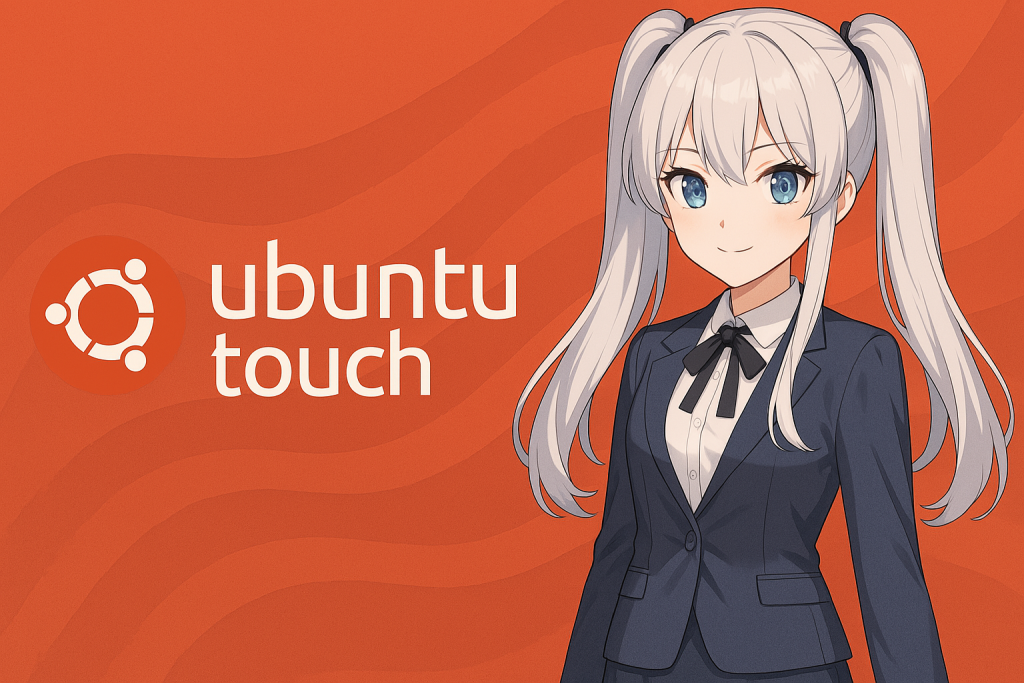
Compatibility with Japanese Mobile Carriers
Ubuntu Touch is developed primarily for Western communication standards, so caution is required when using it with Japanese mobile carriers. The following points are particularly important:
- Use a SIM-unlocked device
- docomo network is relatively stable, but SoftBank and au networks may not support VoLTE
- APN (Access Point Name) settings must be configured manually
In most cases, you can add the APN from “Cellular Settings” in the settings app. If it’s not set up automatically, check the APN information on each carrier’s official website.
Summary of Japanese Environment Setup
| Item | Status | Notes |
|---|---|---|
| Japanese Display | ◎ | Supported by default, usable with just setting changes |
| Japanese Input | △ | Possible with Waydroid or Mozc. Standard support not yet available |
| Carrier Communication | ○ (docomo type) | Manual APN setup required. Some devices may not support VoLTE |
While the Japanese environment in Ubuntu Touch is not yet “perfect,” it is in a state where it can be sufficiently used for daily purposes with some effort.
Next, shall we proceed to Section 8, “Actual Usage Experience and Limitations”?
8. Actual Usage Experience and Limitations
Basic Functionality Varies Significantly “Depending on the Device”
Ubuntu Touch has the essential functions needed for daily smartphone use (calls, SMS, Wi-Fi, web Browse, etc.), and using an officially supported device can provide a quite stable operating experience.
For example, with recommended devices like the Pixel 3a and Volla Phone, the following usage experiences have been reported:
- Calls/SMS: Work without issues
- Mobile data communication: Works normally after APN settings
- Wi-Fi/Bluetooth: Generally stable
- Camera: Still photos are possible. However, video recording may not be supported on some devices
- GPS: Accuracy varies depending on the device
- App operation: OpenStore apps run smoothly
However, the reality is that there is a significant individual difference depending on the device, and the operating status can vary even with the same Ubuntu Touch. It is extremely important to check device-specific operation reports on the UBports official website and forums before installation.
Still Lacks Some of the Polish of Android/iOS
Ubuntu Touch is developed by a user-driven community, so there are limitations in the maturity of features and the range of compatibility compared to commercial OSes.
Representative limitations include:
- Many devices cannot use video recording or HDR camera features
- Commercial apps like Google Maps and LINE cannot be used (can be supplemented with Waydroid)
- The selection of apps is still limited, and they are functionally simple
- Battery optimization and power management features are not yet mature
- Notification functionality can be unstable for some apps
Considering these points, it is more accurate to view Ubuntu Touch not as a replacement for Android or iOS, but as a mobile OS with different values.
Practicality Expanded with Waydroid
One way to compensate for the functional limitations mentioned above is Waydroid (an Android emulation environment). With Waydroid, you can run Android apps within Ubuntu Touch, enabling uses such as:
- Sending and receiving messages with LINE and Messenger
- Using Google Maps and YouTube
- Installing Android-specific Japanese input IMEs
However, Waydroid also has the following limitations:
- Files cannot be completely shared between the Ubuntu Touch side and the Android side
- Heavy apps may run unstably due to lack of hardware acceleration
- Does not work on all devices (limited to some like Pixel 3a)
Regarding Battery and Performance
Battery consumption is generally considered to be somewhat less favorable compared to Android. This is due to the fact that Ubuntu Touch does not directly cooperate with manufacturers for hardware optimization, and background power-saving processes are not yet mature.
However, with some effort, it is often possible to maintain a level that is sufficient for daily use, and many users report that battery consumption is not a concern for light web Browse or SNS-centric usage.
Summary of Actual Usage Impression
| Feature | Evaluation | Comments |
|---|---|---|
| Calls/SMS | ○ | No issues on officially supported devices |
| Mobile Communication | ○ | Usable with manual APN settings |
| Camera | △ | Still photos OK, video requires verification |
| Japanese Input | △ | Possible with Waydroid or Mozc |
| Battery Life | △ | Inferior to Android but practical |
| Number of Apps | △ | Minimum required + supplemented by Waydroid |
| Security | ◎ | Open source + no tracking |
While not perfect, Ubuntu Touch is becoming a realistic option for users who seek “smartphone freedom and transparency.”
Next, shall we proceed to Section 9, “The Future of Ubuntu Touch and the Community”?
9. The Future of Ubuntu Touch and the Community
Continuous Evolution Through OTA Updates
Ubuntu Touch does not have major upgrades like commercial OSes, but it receives regular system updates in the form of “OTA (Over-The-Air) Updates.” As of 2025, OTA-4x releases have progressed, steadily evolving at a pace of roughly once a month or every two months.
Key update contents include:
- Addition of supported devices (new models like Pixel and Volla)
- Security patch updates
- Improvements and bug fixes for the Lomiri UI
- Enhanced Waydroid compatibility
- Feature improvements related to the OpenStore
This continuous feature enhancement, even without commercial incentives, is a testament to the “user-driven, free development system” at the core of Ubuntu Touch.
Active Development of the UBports Community
The development body behind Ubuntu Touch, the UBports community, is composed of developers, users, translators, and supporters from around the world. Registered as a non-profit organization, its operations are supported by donations from individuals and companies.
Main activities of UBports:
- Development and maintenance of Ubuntu Touch
- Proposal and implementation of new features
- Documentation and translation maintenance
- User support (forums, Telegram, Matrix, etc.)
- Monthly “Ubuntu Touch Q&A” live stream
Development proceeds through a completely open process, allowing anyone to participate through code management on GitHub, a translation platform (Weblate), bug trackers, and more.
Multilingual Support, Including Japanese, is Expanding
Ubuntu Touch is designed for international use, so it has very robust multilingual support. Japanese is no exception, with not only support as a system language but also continuous updates to UI translation and the development of Japanese tutorials regarding the introduction of Libertine and Waydroid.
Furthermore, the number of users in Japan is gradually increasing, and information exchange on Telegram groups and message boards (Reddit and Lemmy) is also becoming more active. More Japanese-compatible apps and tutorials are expected to appear in the future.
Future Prospects: Migration to Ubuntu 22.04 Base and 5G Support
The current Ubuntu Touch is built on Ubuntu 20.04 LTS, but migration to Ubuntu 22.04 LTS (Jammy) is planned for the future. This will allow for the use of newer kernels and security features and is expected to lead to increased compatibility with modern devices.
Furthermore, while official support for 5G communication is limited at present, research into supporting 5G modems is ongoing within the UBports community, raising the possibility of catching up with the latest communication standards in the future.
A Challenge as a Sustainable Free OS
Without any commercial support or advertising, Ubuntu Touch is a “sustainable open-source OS” that has been supported by passionate users worldwide. It embodies “pure freedom” that is not dictated by corporate intentions, and this spirit will continue to be preserved.
If you are looking for “freedom,” “transparency,” and “self-determination” in your smartphone, the world of Ubuntu Touch should be very appealing.
10. Who is Ubuntu Touch Suitable For?
For Those Who Have Felt “Doubt” About Android or iOS
If you have ever felt the following while using your smartphone, Ubuntu Touch is worth considering:
- “I’m uneasy about apps asking for more permissions than necessary.”
- “I feel like I’m tied down by the Google or Apple ecosystem.”
- “It’s all notifications, ads, and tracking, and I don’t feel free with my own phone.”
Ubuntu Touch directly addresses these user concerns and provides the means to “truly take back control of your smartphone.”
Ideal for “Digital Citizens” Who Value Freedom
Ubuntu Touch, being open source, privacy-respecting, and highly customizable, is particularly appealing to the following types of people:
- Linux enthusiasts and technicians
→ Being based on Ubuntu, it is familiar for shell operations and kernel structure, allowing you to enjoy a free environment. - Privacy-conscious users
→ Ideal for those who dislike online activity tracking and want to move away from corporate information management. - People who value smartphone “transparency”
→ Ubuntu Touch is an ideal environment for those who want to understand the device’s mechanisms and completely remove unnecessary apps. - Users who want to use it for educational or experimental purposes
→ Easy customization and control are possible, which are difficult with commercial smartphones, suitable for programming education or system experiments.
For Those Who Enjoy Technical Challenges
Introducing and operating Ubuntu Touch may require some technical knowledge.
- Unlocking the bootloader
- Using UBports Installer
- Introducing Waydroid or setting up Mozc
It may not be suitable for those who find such tasks “troublesome,” but for those who “want to enjoy this process too,” it offers the same kind of fun as installing custom ROMs or configuring Linux.
Furthermore, for those who want to be unconstrained by their smartphone and choose what to use and how it operates according to their own will, Ubuntu Touch has a unique appeal.
Who Ubuntu Touch May Not Be Suitable For
Ubuntu Touch is not for everyone. The following types of users may find other OSes more suitable than Ubuntu Touch:
- Those who want to use their smartphone “without thinking about anything.”
- Those for whom mainstream apps in Japan like LINE or PayPay are essential.
- Those who strongly prioritize the latest features like 5G, VoLTE, or high-quality cameras.
However, if you can consider overcoming these limitations through “alternative methods or a change in perspective,” then choosing Ubuntu Touch can be meaningful.
Summary: Ubuntu Touch is for Those Who Want to Reclaim the “Freedom to Choose”
Ubuntu Touch is not an OS that seeks perfected convenience, but an OS for those who want to gain the freedom to choose, build, and manage themselves.
For you who desire a truly open smartphone environment without commercial constraints, it may be the first step towards reclaiming “freedom” and “sovereignty.”
11. Frequently Asked Questions (FAQ)
Here are some frequently asked questions and their answers for readers interested in Ubuntu Touch. We hope this helps resolve any concerns or questions you may have before adopting it.
Q1. Is Ubuntu Touch free to use?
A. Yes, Ubuntu Touch is completely free to use.
It is developed and provided by the UBports Foundation and is licensed under open source licenses (primarily GPL, etc.). There are no usage fees or license fees whatsoever.
Q2. Can I install it on any smartphone?
A. No. Ubuntu Touch is limited to compatible devices and cannot be installed on all smartphones.
It is recommended to use devices listed on the official UBports support list, such as Pixel 3a, Volla Phone, and Fairphone.
Q3. Does it support Japanese input and display?
A. Display is supported by default, but Japanese input requires some additional setup.
The common methods are to install Mozc in Libertine or use an Android Japanese input app via Waydroid. Currently, there is no complete standard implementation of a Japanese IME.
Q4. Can I use Android apps like LINE or YouTube?
A. You cannot use them with Ubuntu Touch alone, but many Android apps will work if you install Waydroid.
However, not all apps work perfectly, and some apps have limitations such as unstable operation or lack of notification support.
Q5. Can I use calls, SMS, and mobile data communication with Ubuntu Touch?
A. If you use a compatible device and a SIM card that matches the communication bands in Japan, calls, SMS, and mobile data communication are generally possible.
However, VoLTE is often not supported, and particular caution is needed with au networks. docomo networks and their MVNOs (e.g., IIJmio) are generally more compatible.
Q6. Where can I get apps for Ubuntu Touch?
A. In Ubuntu Touch, you get apps from a unique app store called “OpenStore.”
Many apps developed by the community are published here, and there is no centralized review process like Google Play.
Q7. What is an OTA update? Are updates automatic?
A. OTA (Over-The-Air) updates are regular system updates for Ubuntu Touch.
Updates are checked and applied manually from the settings app, but notifications are displayed, so they can be easily updated even by beginners.
Q8. Can I revert Ubuntu Touch? Can I go back to the original Android?
A. Yes, it is possible.
If you back up the original ROM before installing Ubuntu Touch, you can restore to the original state using a custom recovery (e.g., TWRP). However, there is a risk of the device becoming unbootable if the procedure is incorrect, so careful work is required.
Q9. Is it secure?
A. Yes, Ubuntu Touch is developed as open source and, unlike commercial OSes, does not include embedded advertising or tracking code.
Also, no unnecessary apps are pre-installed, and it is designed to have few risk factors other than what you install yourself.
Q10. What should I do to try Ubuntu Touch?
A. First, visit the UBports official website (https://ubports.com) and check if your device is compatible.
Then, downloading the “UBports Installer” and following the steps is the smoothest way to proceed with installation.
12. Summary and Call to Action
What Ubuntu Touch Teaches Us About the “True Nature of the Smartphone”
Smartphones have become deeply integrated into our daily lives and are now indispensable. However, at the same time, more and more people are realizing the reality that the more they use them, the more their information is sent somewhere and benefits someone else.
Ubuntu Touch is one “answer” to this modern smartphone environment.
It is not merely an Android alternative OS, but a platform to return the “freedom to choose” and the “freedom to use” to the user.
The Essential Appeal of Ubuntu Touch
As introduced in this article, Ubuntu Touch has the following characteristics:
- Completely free, completely open source
- Privacy-focused with no ads or tracking
- UI is simple and beautiful, Lomiri is intuitive
- Free app installation via OpenStore
- Can also support Android apps using Waydroid
- Transparent, community-based development by UBports
- Sufficiently practical for daily use if you choose a compatible device
This is truly an ideal environment for those who can strongly resonate with the idea that “your smartphone should belong to you.”
Action Steps to Take Your First Step
If you feel inspired to try Ubuntu Touch, please start with the following steps:
- Check compatible devices on the official website
👉 UBports Devices Page - Download the UBports Installer
👉 UBports Installer - Try it on a spare device you no longer need
It’s safer to try it on a spare device you have on hand rather than your main one right away. - Ask questions and exchange information in the community
Connect with users from around the world in Telegram groups, Reddit, forums, etc. - If you like it, consider donating or supporting development
Your interest can be a step towards supporting the future of open source.
Finally: Reclaim the Feeling of “Owning” Your Smartphone
Many people who use Ubuntu Touch say they have “gotten back the feeling of controlling their own smartphone after a long time.”
An environment where you are not chased by notifications and can choose and manage things yourself is truly a form of “digital liberation” in the modern age.
This very moment you feel interested is the time to act.
Why not start a freer smartphone experience with Ubuntu Touch?
Reference Links
はじめに Google Pixel3aにUbuntu Touchをインストールする手順をまとめました。 スマホでUbun…
